Why BLACK NARCISSUS is the Nunsploitation Film We’ve Always Deserved

I’ve seen BLACK NARCISSUS (1947) called many things, a masterpiece, visually breathtaking, even a horror film, but never what it truly is: a nunsploitation film.

BLACK NARCISSUS centers on Sister Clodagh (Deborah Kerr), who has been chosen to head up a small convent that has just been relocated to an isolated mountain in the Himalayas. The film is based on a 1939 novel by Rumer Godden and was written, produced and directed by the esteemed British team Powell and Pressburger. It won two Academy Awards, for Best Cinematography and Best Art Direction, and upon viewing, it is truly incredible that a film produced while the world was at war, before the aid of CGI or special effects, could truly transport you to such a remote location and make it completely believable. The end titles that declare that the film was shot primarily on location at London’s Pinewood Studios always make me shake my head in amazement.
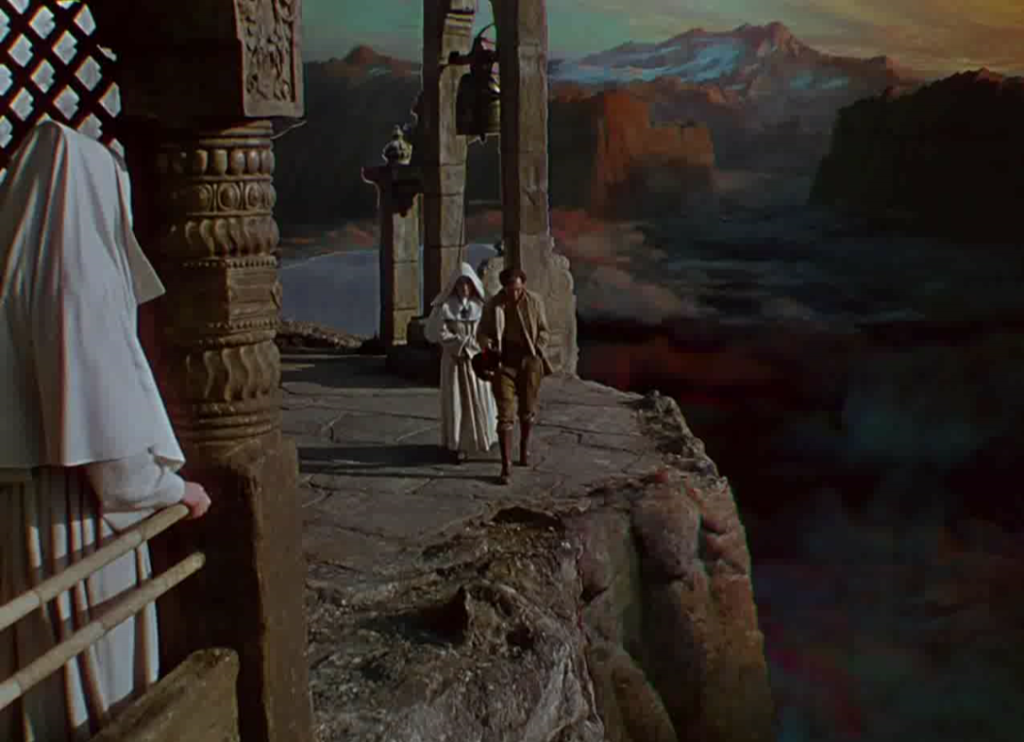
In short, BLACK NARCISSUS is a film you must experience at least once in your life. But beyond the accolades, the dazzling array of color, the pensive sisters awash in moody purple and gold lighting, the fierce winds billowing their cream-colored habits around them like Marilyn on a subway grate, there is a familiar story. It’s one of jealousy, of lust, of haunting memories and of psychological unraveling, the same tropes used in the nunsploitation films that would succeed it in the decades to come.
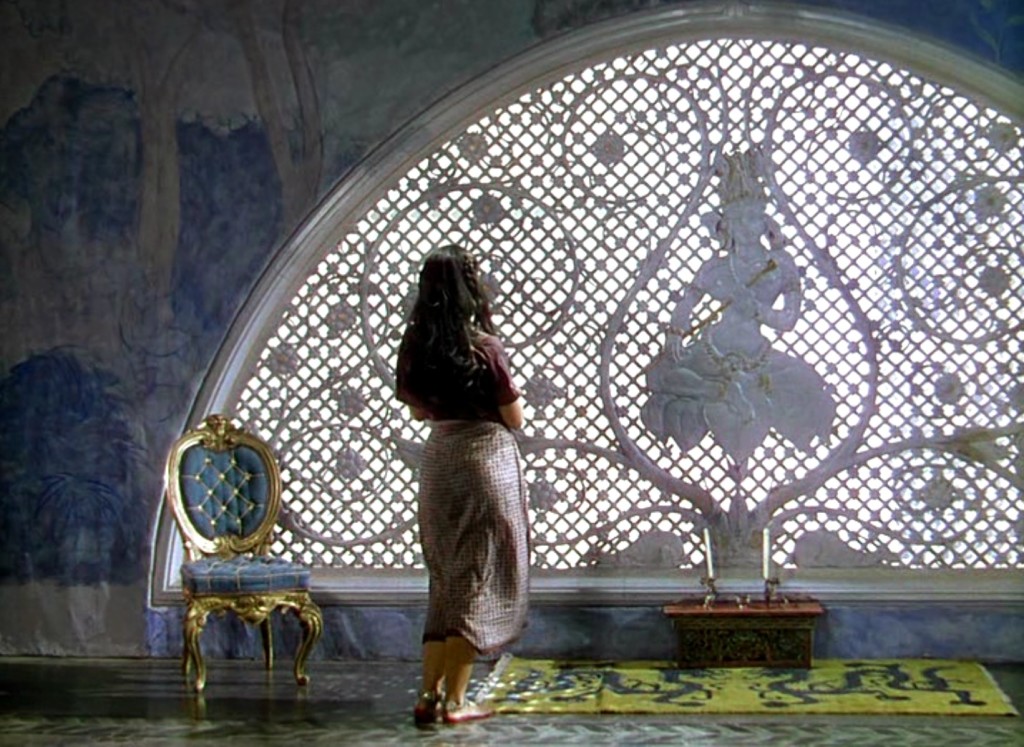
Nunsploitation is a genre of exploitation films that exploded in the 1970s, particularly in European countries such as Italy and Spain, where Catholicism was an integral part of the culture. The main conflict of the films usually centers on the sexual oppression and isolation of the women, which eventually lapses into lesbianism, hedonism, self-flagellation and medieval punishments that involve mortification of the flesh. There’s often a priest or male figure that represents both sexual temptation and predation (often indulged), as well as violence. Some films even borrow from the rape-revenge exploitation films and have murderous nuns rampaging as either revenge for some past sexual violation or as a way of sexual release.
The most famous example from the genre is perhaps Ken Russell’s X-rated THE DEVILS (1971), based on Aldous Huxley’s The Devils of Loudun, it is a film simultaneously considered a masterpiece and (still) too incendiary to warrant a Director’s Cut. Other examples of the genre include Jerzy Kawalerowicz’s esteemed MOTHER JOAN OF THE ANGELS (1961), a film that also explores the Loudun case; Italian offerings such as THE NUN AND THE DEVIL (1973), FLAVIA THE HERETIC (1973), and KILLER NUN (1978); Mexico’s ALUCARDA (1975); and more recent entries such as Robert Rodriguez’s MACHETE (2010).
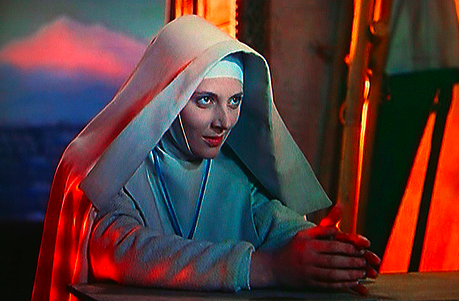
But BLACK NARCISSUS also fits into this genre, and while the film doesn’t feature some of the more explicit sexuality of its successors, it’s still an incredibly erotic film, one that even co-director Michael Powell, who later went on to direct the voyeuristic thriller PEEPING TOM (1960), called the most erotic film he has ever made. The sisters all fall prey to the sensuality of their surroundings, giving into hysteria, forgoing their practical duties (planting flowers instead of vegetable, thereby eliminating a vital food source), and, most devastatingly, falling prey to the charms of the local British agent, Mr. Dean (David Farrar).
As Sister Clodagh struggles to get the convent running smoothly, the intrusion of Mr. Dean, whom the sisters must rely upon for both manual labor and to help them integrate into the community, brings back powerful memories of her former life in Ireland. We see her wrestle with her past while in the middle of mass, as scenes of her privileged upbringing and her former lover are intertwined with her prayers. We later find out, through her teary confession to Mr. Dean, that she took her vows in order to forget this lover, who refused to marry her and left for America instead.
For Sister Clodagh, Mr. Dean doesn’t just represent sexual temptation, although it is her suppressed attraction to him, evident in scenes where the two spar over trivialities, that causes her painful memories to bubble to the surface. But in addition, Mr. Dean serves a test of her faith, causing her to doubt her religion and the choices she has made, both in taking her vows and also in heading up the isolated convent.
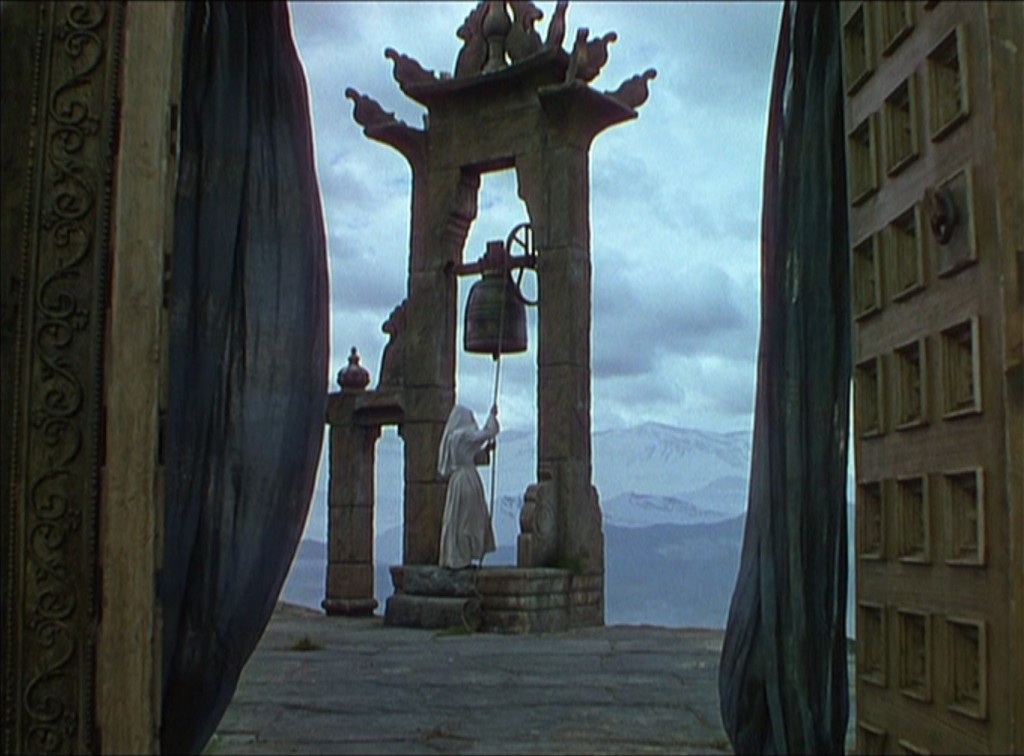
But Mr. Dean also serves as a crucial catalyst for the film’s main conflict between Sister Clodagh and Sister Ruth (Kathleen Byron), the latter of which we see mentally unravel due to her obsession with Mr. Dean and her jealousy over his budding, if not complicated, friendship with Sister Clodagh. It’s perhaps worth noting that Powell was directing his ex-lover (Kerr) and his current lover (Byron) in these scenes, which adds a layer of depth to the tension between the two characters.
From the film’s start we are told of Sister Ruth’s shaky health, but we truly begin to see her decline after her first meeting with Mr. Dean, where she enters the room clammy and covered in blood, having just saved one of his most valuable workers from death. After Mr. Dean thanks her for this act, her sexual obsession is in full bloom and we see her obsessively spying on Mr. Dean from behind shadowy, latticed windows. She frequently appears pale and sweaty and after a confrontation with Sister Clodagh, who catches her spying, she becomes hysterical, screaming at her superior as her skin turns gray and her eyes redden.
The film’s big reveal comes when Sister Clodagh confronts Sister Ruth, after learning that the unstable woman has refused to renew her vows for the year. In a scene imitated in countless nunspoiltation films to come, Sister Ruth is revealed to us, free of her restrictive habit, wearing a clinging dress and makeup, with her hair fashionably pinned up. She is stunning and sexual. As she slicks her lips in red lipstick, Sister Clodagh clutches her prayer book. Ruth, a sister no more, is ready for a night on the town, or more specifically, a night in Mr. Dean’s bed, which is where she heads as soon as Sister Clodagh falls asleep. Ultimately, his rejection sends the unstable woman into a murderous rampage with Sister Clodagh as the main target.
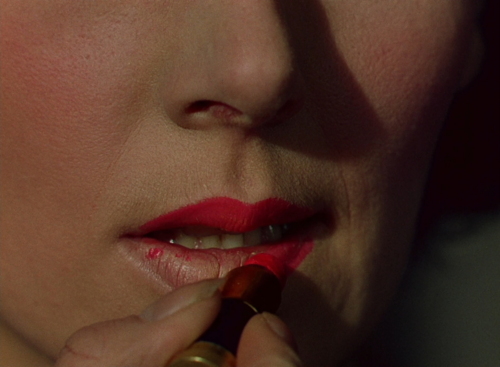
There is no question that Sister Ruth’s final transformation, silhouetted in a doorway, with waxy skin and flaming red eyes that call to mind the Kumadori makeup resplendent in Japanese Kabuki theater, has served as the forerunner to countless female on-screen breakdowns, especially in the nunsploitation films that have followed. Whether it’s hunchbacked Sister Jeanne (Vanessa Redgrave) scrambling into a crawlspace to steal a fleeting glimpse of the regal Grandier (Oliver Reed) in THE DEVILS or the slow decline of Anita Ekberg’s morphine and sex addicted Sister Gertrude in KILLER NUN, all owe a debt to Byron’s performance.
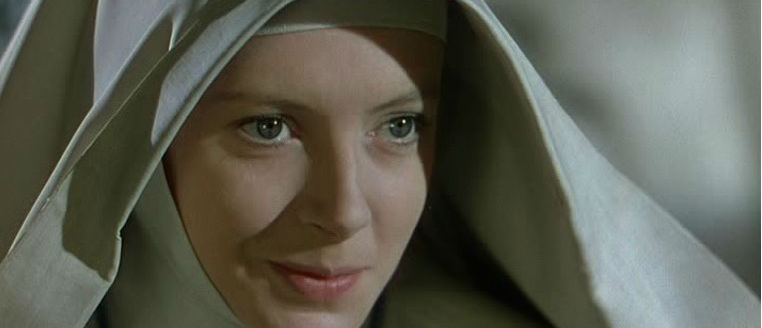
BLACK NARCISSUS also shows us that a film can take the recurring themes found in nunsploitation films, namely sexual obsession, isolation, mental breakdowns, and religious doubt, and turn them into something stunning. And BLACK NARCISSUS is as much an exploitation film as THE DEVILS is, for both are a big budget films featuring acclaimed actors with celebrated directors. And so, let me be the first to call BLACK NARCISSUS for what it is, one of the greatest nunsploitation films of all time.
— JAMIE RIGHETTI.
Tags: Deborah Kerr, Emeric Pressburger, Jamie Righetti, Michael Powell, Nuns, Nunsploitation, Pinewood Studios, The Classics

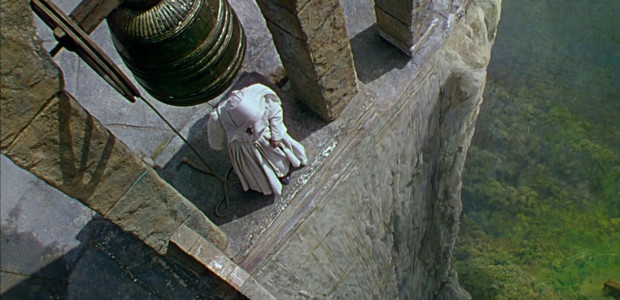
No Comments